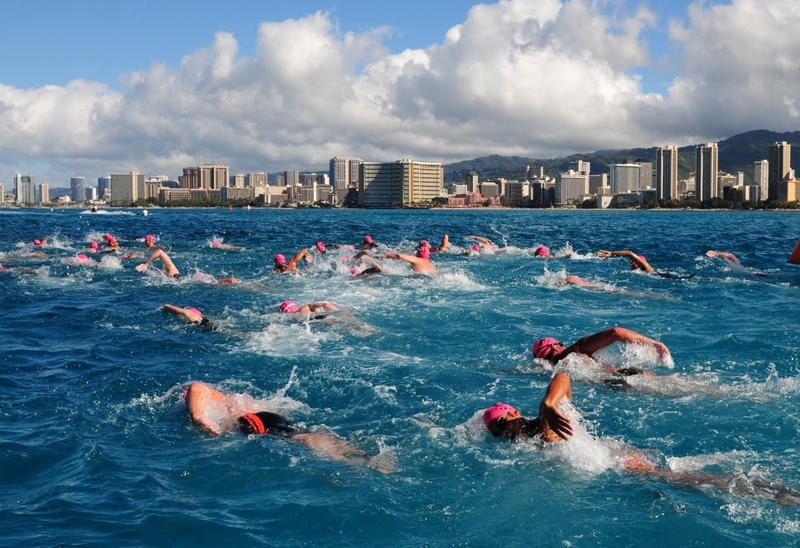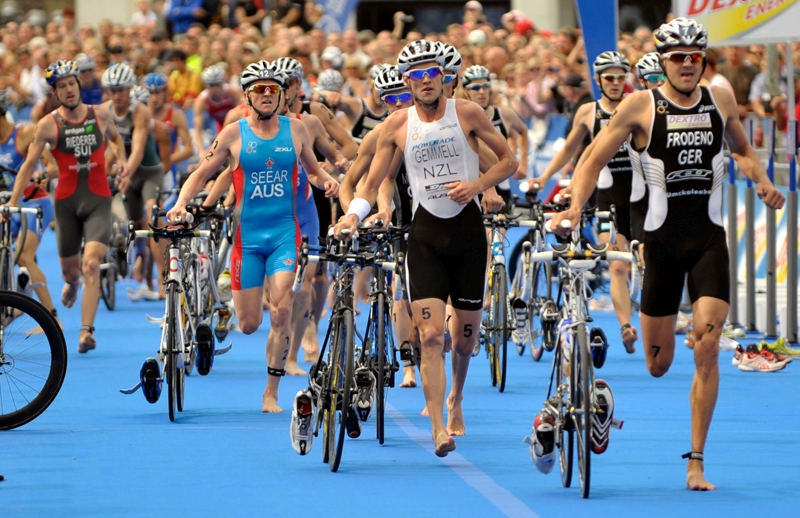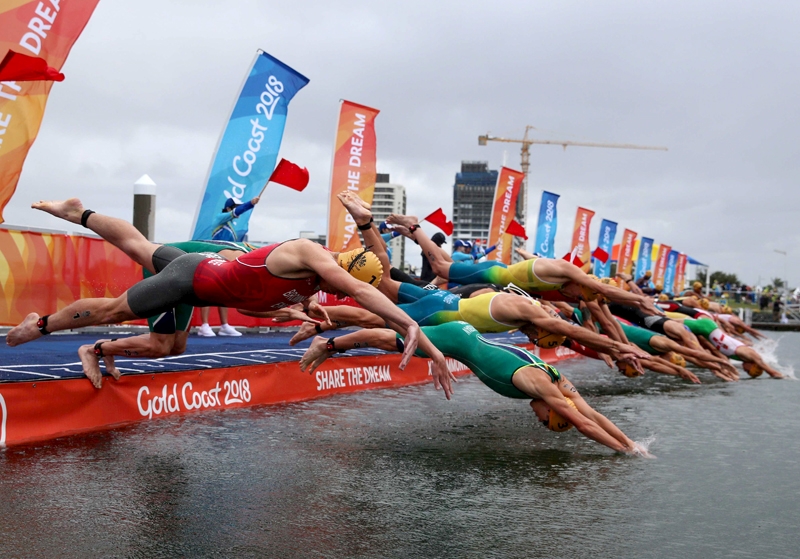You are viewing 1 of your 1 free articles. For unlimited access take a risk-free trial
Triathlon: can you cope with some interference?

Cross training events such as triathlon offer a number of physiological advantages. First of all, being able to alternate your training modes creates a more balanced loading on the muscular system, which is less likely to lead to muscle strength imbalances and (as a consequence) injury. Secondly, varying your training allows you to work your cardiovascular system more extensively with less chance of localised muscle overload. Then of course, there’s the very important issue of boredom; varying your training mode is more mentally stimulating and less likely to lead to boredom and staleness.
There is however a major drawback, which is the issue of ‘specialisation’ – or rather the lack of it. As a rule of thumb, the specificity law of training favours single-sport athletes – eg if your only activity is cycling, you’ll have the advantage of spending far more time developing the necessary motor skills/patterns and biochemical adaptations in the muscles used on the bike than say a triathlete, who has to divide their time across three disciplines of which two will be non-specific to cycling.
Interference
Another confounding factor is one of ‘interference’ between the disciplines of cycling and running, where there’s a considerable overlap between the patterns of muscle recruitment. Both disciplines rely mainly on the calves of the lower leg, the quadriceps and hamstrings of the front and rear thigh respectively and of course the buttock muscles. Also, the ranges of muscle movement in both disciplines are not too dissimilar. Add these facts together and it’s easy to see how the effort invested in the cycling leg of a race can significantly affect your subsequent running performance. An obvious question for triathletes seeking to maximise their overall performance therefore is how best to train and pace the cycling leg to minimise the impact on running performance without losing too much time on the bike?Research shows that the cycling leg of a triathlon is very critical to subsequent running performance and that central nervous system fatigue and motor control as a result of a prior bout of cycling play a significant role in subsequent running performance in triathletes. Indeed, one study found that a 45-minute high-intensity bike session altered the patterns of muscle recruitment and movement during a subsequent run, particularly at the knee and ankle joints(1). One of the consequences of this altered muscle recruitment was a reduction in ‘running economy’ in the run that followed – ie compared to no prior cycling, the triathletes needed to consume more oxygen to maintain a given running pace (a bad thing!). Unlimited training is no solution either as research shows that during periods of combined high-volume bike and run training, triathletes are by no means immune from injury and may even suffer from cumulative stress precisely because of the cross training nature of their sport(2).
Given these findings, what is the best advice for triathletes seeking to maximise performance when running after a prior bike ride? Here are some starter recommendations based on the current evidence:
- Include plenty of back-to-back bike/run sessions in your training – this will help your CNS to ‘become familiar’ with the changes in motor-firing patterns demanded by the bike-run transition.
- Perform running-specific strength training – to help combat CNS fatigue in the running section of the race.
- Practice honing your pedalling technique (avoid ‘pushing’ big gears) and riding posture on the bike to minimise the impact on subsequent run performance.
- When increasing your cycling load, back off a bit on the running (and vice-versa). You may risk injury if your total bike/run training load increases within too short a timeframe.
- In competition, try to pace yourself on the bike, avoiding high levels of exertion (your perceived effort should feel no higher than ‘hard’) - to reduce the impact on your subsequent running economy.
Andrew Hamilton, Sports Performance Bulletin editor
References
- J Sci Med Sport. 2010 Jul;13(4):460-4
- Br J Sports Med. 2011 Apr;45(4):382
See also:
Newsletter Sign Up
Testimonials
Dr. Alexandra Fandetti-Robin, Back & Body Chiropractic
Elspeth Cowell MSCh DpodM SRCh HCPC reg
William Hunter, Nuffield Health
Newsletter Sign Up
Coaches Testimonials
Dr. Alexandra Fandetti-Robin, Back & Body Chiropractic
Elspeth Cowell MSCh DpodM SRCh HCPC reg
William Hunter, Nuffield Health
Keep up with latest sports science research and apply it to maximize performance
Today you have the chance to join a group of athletes, and sports coaches/trainers who all have something special in common...
They use the latest research to improve performance for themselves and their clients - both athletes and sports teams - with help from global specialists in the fields of sports science, sports medicine and sports psychology.
They do this by reading Sports Performance Bulletin, an easy-to-digest but serious-minded journal dedicated to high performance sports. SPB offers a wealth of information and insight into the latest research, in an easily-accessible and understood format, along with a wealth of practical recommendations.
*includes 3 coaching manuals
Get Inspired
All the latest techniques and approaches
Sports Performance Bulletin helps dedicated endurance athletes improve their performance. Sense-checking the latest sports science research, and sourcing evidence and case studies to support findings, Sports Performance Bulletin turns proven insights into easily digestible practical advice. Supporting athletes, coaches and professionals who wish to ensure their guidance and programmes are kept right up to date and based on credible science.














